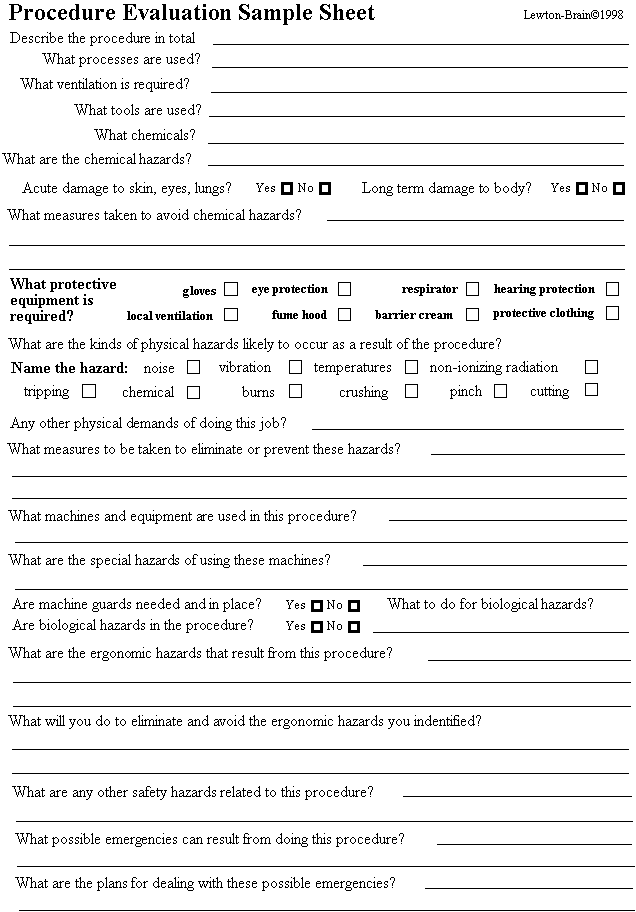Safety Procedure Evaluation
When looking at your shop and workspace and considering safety issues it is important to evaluate the procedures you use in terms of safety. This lets you get a handle on what you have to watch out for. If you do this and then make changes to correct unsafe practices or hazards you have then your workspace will have become that much safer for you, your family and visitors.
1 Minute Read
When looking at your shop and workspace and considering safety issues it is important to evaluate the procedures you use in terms of safety. This lets you get a handle on what you have to watch out for. If you do this and then make changes to correct unsafe practices or hazards you have then your workspace will have become that much safer for you, your family and visitors.
Describe the procedure in total
- What happens, what tools are used, chemicals, movements, ventilation, relationship to other procedures and work sequences in the shop.
- re chemicals involved?
- What are they?
- What are the chemical hazards?
- What will you do to prevent or avoid these chemical exposure hazards?
- What are the physical demands of doing the procedure?
- What are the physical hazards likely to occur as a result of the procedure?
- Name the hazard (i.e.: noise, vibration, radiation, temperatures, tripping, pinching, cutting, crushing etc.)
- What will you do to eliminate or prevent these physical hazards? (protective equipment for instance).
- What machines and equipment are used in this procedure?
- What are the hazards of using these machines?
- Are machine guards needed and in place?
- Are machines maintained and checked for proper function?
- What will you do to use these machines safely?
- Are there any biological hazards in the procedure? (for example legionnaires disease can be harbored in stagnant lapidary cutting water)
- What will you do to eliminate any biological hazards?
- What are the ergonomic hazards that result from this procedure?
- What will you do to eliminate and avoid the ergonomic hazards you identified?
- What are any other safety hazards related to this procedure?
- What possible emergencies can result from doing this procedure?
- What are the plans for dealing with these possible emergencies?
You assume all responsibility and risk for the use of the safety resources available on or through this web page. The International Gem Society LLC does not assume any liability for the materials, information and opinions provided on, or available through, this web page. No advice or information provided by this website shall create any warranty. Reliance on such advice, information or the content of this web page is solely at your own risk, including without limitation any safety guidelines, resources or precautions, or any other information related to safety that may be available on or through this web page. The International Gem Society LLC disclaims any liability for injury, death or damages resulting from the use thereof.
Charles Lewton-Brain
Master goldsmith Charles Lewton-Brain trained, studied and worked in Germany, Canada and the United States to learn the skills he uses. Charles Lewton-Brain is one of the original creators of Ganoksin.
The All-In-One Jewelry Making Solution At Your Fingertips
When you join the Ganoksin community, you get the tools you need to take your work to the next level.
Trusted Jewelry Making Information & Techniques
Sign up to receive the latest articles, techniques, and inspirations with our free newsletter.
